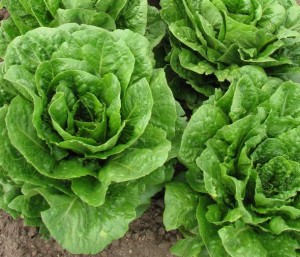USDA Offers 16 New Lettuce Breeding Lines

USDA researchers developed a Romaine lettuce line that is resistant to dieback caused by soilborne viruses. Photo by Jose Orozco.
USDA scientists in California recently developed 16 new lettuce breeding lines. These lines, now available to plant breeders, include six icebergs, four Romaines, and six leaf lettuces.
In field, greenhouse, and laboratory experiments, Agricultural Research Service (ARS) plant geneticists Ivan Simko, Ryan Hayes, and Beiquan Mou, and plant pathologist Carolee T. Bull, all in the Crop Improvement and Protection Research Unit in Salinas, CA, developed and tested the performance and resistance of the new lettuce breeding lines.
The Salinas researchers collaborated with Yaguang (Sunny) Luo, a research food technologist at the Food Quality Laboratory in Beltsville, MD, for testing of the lines, including postharvest evaluations of lettuce quality; size and shape of the heads; size, shape, and texture of the leaves; and core length.
The research group’s goal was to develop and release lettuce lines with combined resistance to pests and diseases and with as many different traits as possible that are advantageous to producers and consumers. Of the six iceberg lettuce lines, five are suitable for salad-blend and whole-head markets, according to Simko. The one iceberg line not suitable for these markets can instead be used in breeding programs as a donor of genes for resistance to downy mildew, bacterial leaf spot, and Verticillium wilt.
Two of the Romaine lettuce lines are appropriate for salad-blend, spring-mix, and whole-head production, Simko says. One of the other lines can’t be used for fresh-cut products because it decays rapidly after processing, but it is suitable for the whole-head market. Each of these three breeding lines has resistance to dieback, a plant disease to which most of the currently grown Romaine cultivars are susceptible.
Each of the six leaf-lettuce breeding lines is acceptable for commercial production as a salad blend or spring mix. Three could also be used for whole-plant production, and two lines demonstrated very high field resistance to downy mildew, Simko says.
This research was also supported by the California Leafy Greens Research Program and the California Department of Food and Agriculture Specialty Crop Block Grant Program.
Limited samples of the lettuce seeds are available for distribution to those interested in conducting research or commercial production.
Click here to read more in the May 2015 issue of AgResearch Magazine.
Source: Sharon Durham, USDA ARS










